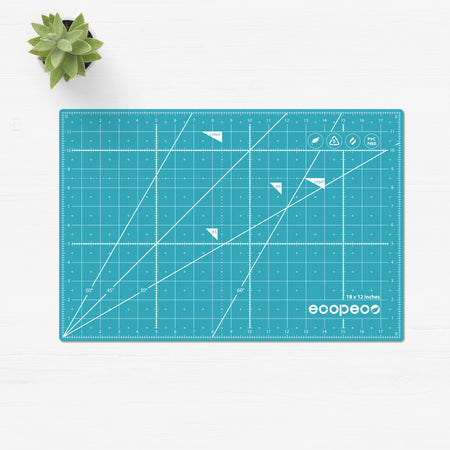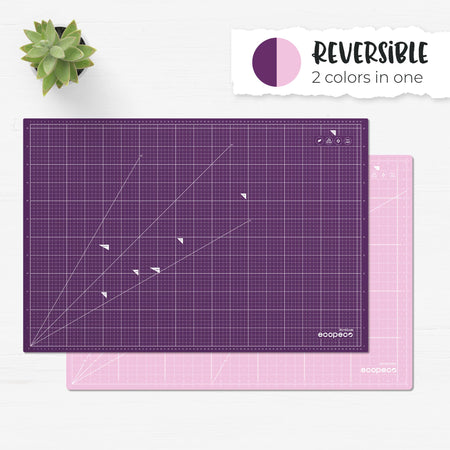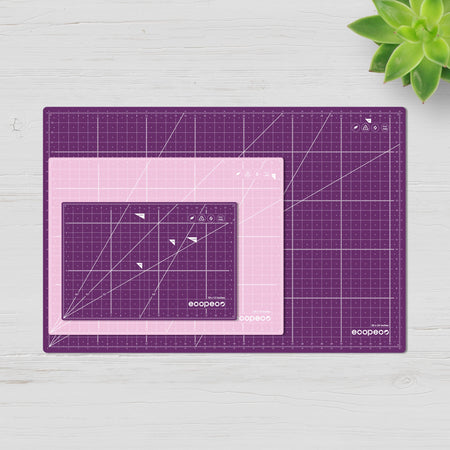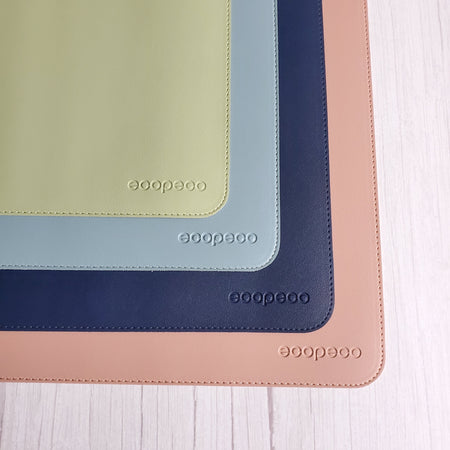FAQs
ecopeco® cutting mats are made from 100% polypropylene (PP)— a clean, non-toxic plastic that’s free from PVC, plasticizers like DEHP, and harmful BPAs, which are commonly found in cutting mats. As a result, ecopeco® cutting mats don’t release chemical fumes and are odorless, safe and recyclable. By avoiding toxic additives and using a more sustainable material, we reduce environmental impact and offer a healthier choice for your workspace.
While ecopeco® cutting mats most certainly are self-healing cutting mats, they do not 'heal' quite as well as PVC made cutting mats, which include plasticizers that give it that soft, rubbery texture. Our mats are a bit firmer yet the surface remains durable and precise for cutting. So, you're trading a bit of self-healing ability for a healthier, safer workspace.
A self-healing cutting mat is made from materials that flex and close back up after being cut. Instead of leaving deep grooves, the surface "heals" by gently resealing itself, helping the mat last longer and keeping cuts smooth. Most self-healing mats are made with soft PVC layers, which allow this effect — though they often contain toxic plasticizers. ecopeco® mats use safer PP material, offering durability without harmful chemicals.
ecopeco® is a Taiwanese brand! You can read more about us here. We have been operating for over 8 years with mats being sold all over the world, shipped direct to our customers. We oversee all production, which happens in our hometown, so everything is monitored for the most sustainable outcome with the finest cutting mat quality.
All orders are shipped out the next day (excl. weekends and national holidays) from our HQ in Taiwan. Most international orders take about 7-12 business days to arrive. Occasionally these times may vary, sometimes surprisingly quick, sometimes a bit delayed for reasons out of our hands, but all successful. A confirmation email with tracking number is sent after the order is placed. Feel free to send us an email for an update.
Unfortunately not. This website is the only way to buy one. If you are a retailer with a passion for creativity and the environment and you are interested in stocking our products please reach out to us.
In short, very unlikely. We ship directly from Taiwan, and to date, none of our U.S. customers have ever been charged import duties or tariffs for ecopeco® cutting mats. Orders are shipped for Personal Use, and our packaging and product classification are designed to minimize any issues with customs. While there’s always a theoretical chance customs could apply a charge, in practice, this simply hasn’t happened — even with changing global trade policies.





